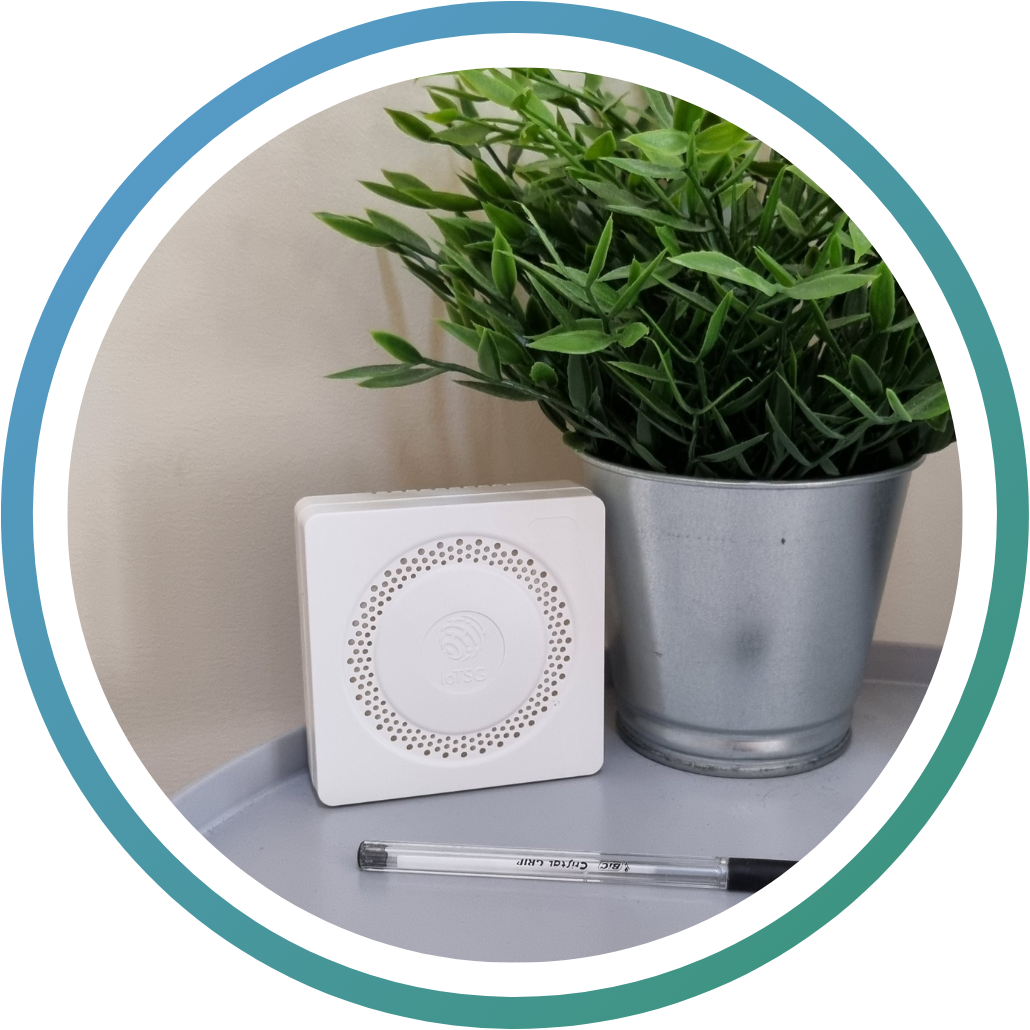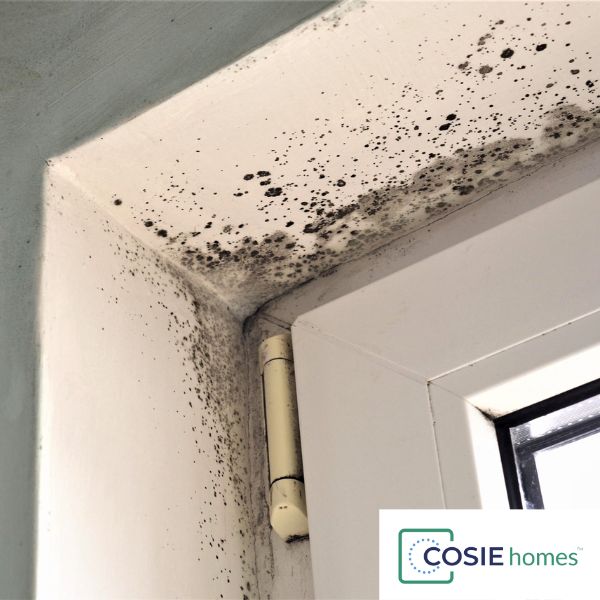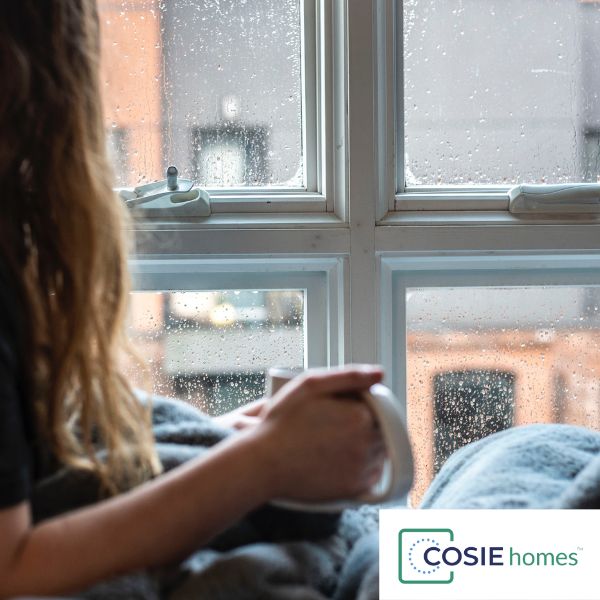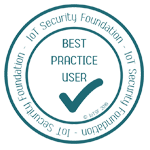COSIE homes - IoT Environmental Monitoring for Housing Providers

Environmental monitoring is critical to identifying, tackling, and preventing damp and mould in residential buildings.
With the cost of living escalating, fuel prices rising, and growing awareness of the health risks associated with damp and mould, the importance of residential environmental monitoring is increasing.
With recent stories in the news surrounding lawsuits and fines for landlords and housing providers who are not tackling these issues, the simpler and smarter approach that Internet of Things (IoT) technology provides has never been timelier.
In this post, we'll define IoT environmental monitoring, such as COSIE homes, and explore why it is so valuable to the housing sector. We will also share some key examples of how housing providers are already reaping the benefits of IoT environmental monitoring, as well as top tips for adopting IoT monitoring as part of your organisation's damp & mould strategy.

What is IoT environmental monitoring?
A helpful definition of the Internet of Things is from Gartner,
"The Internet of Things (IoT) is the network of physical objects that contain embedded technology to communicate and sense or interact with their internal states or the external environment."
In this context, a property's internal environment, such as ambient temperature and relative humidity, can be sensed using a single IoT device. The information is then relayed to the housing team to inform or direct specific actions or workflows.
However, rather than just providing values for temperature and humidity, by including machine learning with IoT technologies, more valuable and easily understandable insights can be created, such as damp and mould risk scores, as provided by COSIE homes. This smarter, clearer information enables housing providers to prioritise those properties most in need of intervention.

Why is IoT Environmental monitoring important?
Following the tragic news stories from the last couple of years and the resulting increased focus on housing in the UK, knowing the state of the housing you provide is paramount. Additionally, in July 2023, the landmark Social Housing Act officially became law. This new law directly affects the housing sector in various ways, including more robust enforcement powers for accommodation inspections.
In response to this new law, Fiona MacGregor, Chief Executive of the Regulator of Social Housing, said,
"We're gearing up to start our new programme of regulatory inspections from next April, and landlords will need to demonstrate how they're providing good quality homes and services for tenants as well as meeting our governance and viability standards."
IoT environmental monitoring solutions, such as COSIE homes, enable landlords and housing providers to provide evidence that they are monitoring the conditions of their properties. Additionally, with sensing options that categorise homes by their risk of damp and mould, housing teams can be aware of any potential problems as quickly as possible.
This approach has been shown to increase efficiency, save costs with proactive repairs before deeper problems arise, and improve tenant satisfaction.
IoT environmental sensing like COSIE homes has also been used to…
- Observe void properties to reduce maintenance
- Monitor properties with registered complaints to provide a clearer picture of the situation
- Document property performance before and after installation of insulation or other sustainability/retrofit installations
- Identify potential cases of resident fuel poverty and the resulting health impacts

Real examples of IoT environmental monitoring for damp and mould risk
Increasing numbers of housing providers are adopting COSIE homes as a simpler and smarter way to identify properties at risk of damp and mould. Custom reporting and integration into existing workflows are allowing these organisations to demonstrate action and deliver efficiencies whilst tackling real housing stock challenges.
Royal Borough of Kingston upon Thames
As a local authority with social housing stock, Kingston Council demonstrates this proactive approach to identifying properties of damp and mould concern. The insights from the COSIE home sensors enable Kingston's housing teams to address property issues before mould starts to grow. This includes identifying residents they need to engage with and properties needing structural improvements.
Additionally, properties where the humidity was identified as exceptionally high are also sent information to help prevent condensation and damp and mould growth. The sensors can identify whether a resident has been using their heating or not, therefore impacting the likelihood of damp and mould in the property. Additionally, it was observed that a void property can create a fridge-like effect around other properties, further directing their approach to void property management.
Accommodation Manager David Hill commented on the impact of these sensors on the local authority,
"These sensors were warmly welcomed to nip problems in the bud before they happened, but also to give us a bigger understanding of what is going on inside properties. The sensors enabled us to identify properties with critical cold and potential for mould, allowing them to go and talk to residents and offer any available support. It's a wonderful bit of kit; fantastic!"
To read more about our work with Kingston, check out the case study here.
Home Group
As successful bidders for the SHDF Wave 1, Home Group chose to monitor their retrofit properties with COSIE home sensors to ensure the quality of their installations and provide additional benefits to their customers. This monitoring was funded by the Digitalisation of Retrofit funding available for SHDF bids. For Home Group, prioritising customers and improving property sustainability was of crucial importance. Their sustainability co-ordinator commented,
"Home Group are going above and beyond the requirements set out by BEIS for monitoring and evaluation to help, not only on this SHDF Wave 1 project but help bring best practice forward to the next waves of funding and increase confidence with our customers."

Tips for adopting IoT environmental monitoring for damp and mould risk
If this type of monitoring technology is new to you or your team, here are a few considerations before adopting this solution in your organisation.
1. Define the challenges you are trying to solve
Adopting tech just for tech's sake rarely delivers the desired results, as there is nothing to benchmark against. By identifying the challenges you are trying to solve, you can ensure that the technology delivers the information you need and makes a real difference whilst providing a return on investment (including avoiding fines or compensation).
2. Select the right IoT partner
There are a lot of components and systems integrated together to deliver an end-to-end IoT monitoring solution. Choosing a company that understands and manages all the tech puzzle pieces can save a lot of hassle and cost. IoT Solutions Group works closely with housing providers to deliver bespoke reports to match their specific needs.
3. Consider installation cost & hassle
Some environmental monitoring systems require multiple devices, connectivity set-up, or even an electrician or engineer to complete the installation. COSIE homes is a battery-powered, single-device package that can be installed in seconds by residents or housing teams without any connectivity set-up.
In summary, IoT environmental monitoring, such as COSIE homes, is revolutionising the monitoring of properties for damp and mould. This smarter, simpler solution gives landlords and housing providers the evidence they need to demonstrate that they are providing safe and warm homes. They can quickly assess those properties needing interventions, illustrate the success of sustainability and retrofit measures, and provide support and reassurance to residents.
To read more about our work with Kingston, check out the case study here.
Click here to learn more about our COSIE home sensing for damp and mould, as well as book a call with one of our IoT Monitoring experts.





